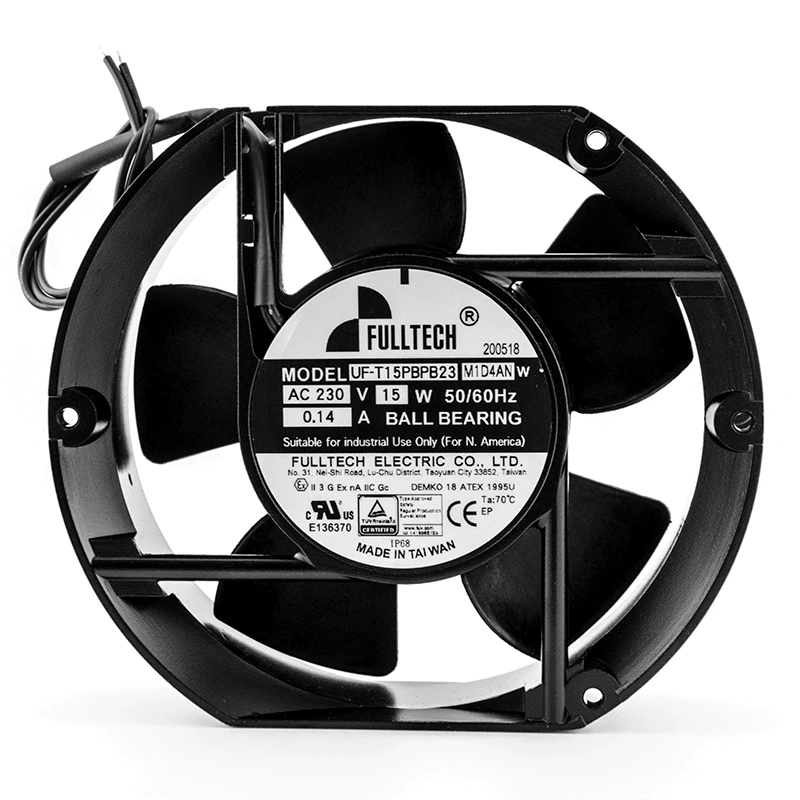Description
FULLTECH Explosion is the sudden transformation of a substance from one state to another through physical or chemical changes, and the release of enormous energy. The energy released at a rapid speed will cause violent impacts and damage to surrounding objects.
The three conditions that are usually required for an explosion are:
1) Explosive substances: Substances that can react with oxygen (air), including gases, liquids, and solids.
2) Oxygen, air.
3) Sources of ignition, including open flames, electrical sparks, mechanical sparks, electrostatic sparks, high temperatures, chemical reactions, light energy, etc.
Therefore, explosion-proof considerations for electrical equipment are usually based on the three conditions required for explosion protection certification mentioned above.
Explosion proof sign refers to the identification used to describe the explosion-proof level, temperature group, explosion-proof type, and applicable area of explosion-proof electrical equipment
Taking the explosion-proof symbol “Ex (ia) IIC T6” of the instrument as an example, its corresponding meaning is as follows:
Logo content
symbol
meaning
Explosion proof declaration
Ex
Meets certain explosion-proof standards, such as China’s national standards
Explosion proof method
Ia
Adopting IA level intrinsic safety explosion-proof method, it can be installed in Zone 0
Gas category
IIC
Admitted to involve Class IIC explosive gases
Temperature group
T6
The surface temperature of the instrument shall not exceed 85 ℃
Explosion proof signs have specific definitions for “explosion-proof method,” “gas category,” “temperature group,” and “hazardous location.”.
Our common international explosion-proof certifications mainly include IECEx certification and ATEX certification.
IECEx certification:
The International Electrotechnical Explosion proof Certification System (IECEx) – The purpose of certification is to establish an international certification system for explosion-proof products, achieving unified standards, certificates, and marks in the audit of explosion-proof products. Through the mechanism of multiple countries transferring certificates, products that meet the specifications can quickly enter the markets of various countries, thereby promoting international trade. Under the IECEx system, accredited certification bodies (ExCB) and testing laboratories (ExTL) are engaged in the certification work of the system.
ATEX certification:
Europe (ATEX) – According to ATEX Explosion Protection Directive 94/9/EC, this is a mandatory regulation among EU member states. The explosive environment referred to here includes flammable gases, flammable vapors, and dust; The equipment applicable to the directive can be divided into mechanical equipment and electrical equipment. Once the product has passed the instructions and obtained compliance certification, it can be affixed with the CE mark and Ex mark pattern.
On March 23, 1994, the European Commission adopted the Directive “Equipment and Protection Systems for Potential Explosive Environments” (94/9/EC)
The new ATEX directive 2014/34/EU was issued in 2014 and will be enforced on April 20, 2016, with no transitional period in between.
This directive covers both mine and non mine equipment, and unlike previous directives, it includes mechanical and electrical equipment, extending the potential explosion hazard environment to dust, flammable gases, flammable vapors, and mist in the air. It specifies the application technical requirements, basic health and safety requirements, and the qualification assessment procedures that must be adopted before the equipment is put into the European market within its scope of use for potentially explosive environmental equipment.
ATEX certified product range:
The scope of equipment applicable to ATEX certification is particularly broad, roughly including fixed offshore platforms, petrochemical plants, flour mills, and other potentially explosive environments.
Electrical equipment:
Equipment containing electronic components for generating, storing, distributing, and converting electrical energy, or control devices that convert electrical energy into energy
Non electrical equipment
Only mechanically moving equipment generates sources of detonation (such as hot surfaces, friction sparks, etc.) such as gearboxes, fans, compressors, brakes, mixers, and non electrical equipment is usually connected to electrical equipment to provide kinetic energy.
Products not covered by ATEX certification:
Medical devices intended for use in medical environments
Explosion hazards are caused entirely by explosive substances or unstable chemical substances in equipment and protective systems;
Equipment intended for use in household and non-commercial environments, where potential explosive gases are rarely formed;
If it happens, it is only the result of a gas leakage accident;
Personal protective equipment included in Directive 89/686/EEC;
Navigation vessels and mobile offshore installations, along with their equipment;
Transportation vehicles refer to vehicles and their trailers specifically used for transporting passengers through air, road, railway, or water transportation networks, as well as transportation vehicles designed to transport goods through air, road, railway networks, or waterways. Vehicles intended for use in explosive environments will not be included.
Explosion proof fan specifications:
ATEX model Description Size Safety Approval
UFT60BPB0AM1D4AN Axial fan, 230Vac, ball bearing 60x60x25mm UL CUL TUV, ATEX
UFT92ABPB0AM1D4AN Axial fan, 230Vac, ball bearing 92x92x38mm UL CUL TUV, CE, ATEX
UFT12ABPB0AM1D4AN Axial fan, 230Vac, ball bearing 120x120x38mm UL CUL TUV, CE, ATEX
UFT15P BPB23M1D4AN Axial fan, 230Vac, ball bearing 172x150x51mm UL CUL TUV, ATEX


Reviews
There are no reviews yet.